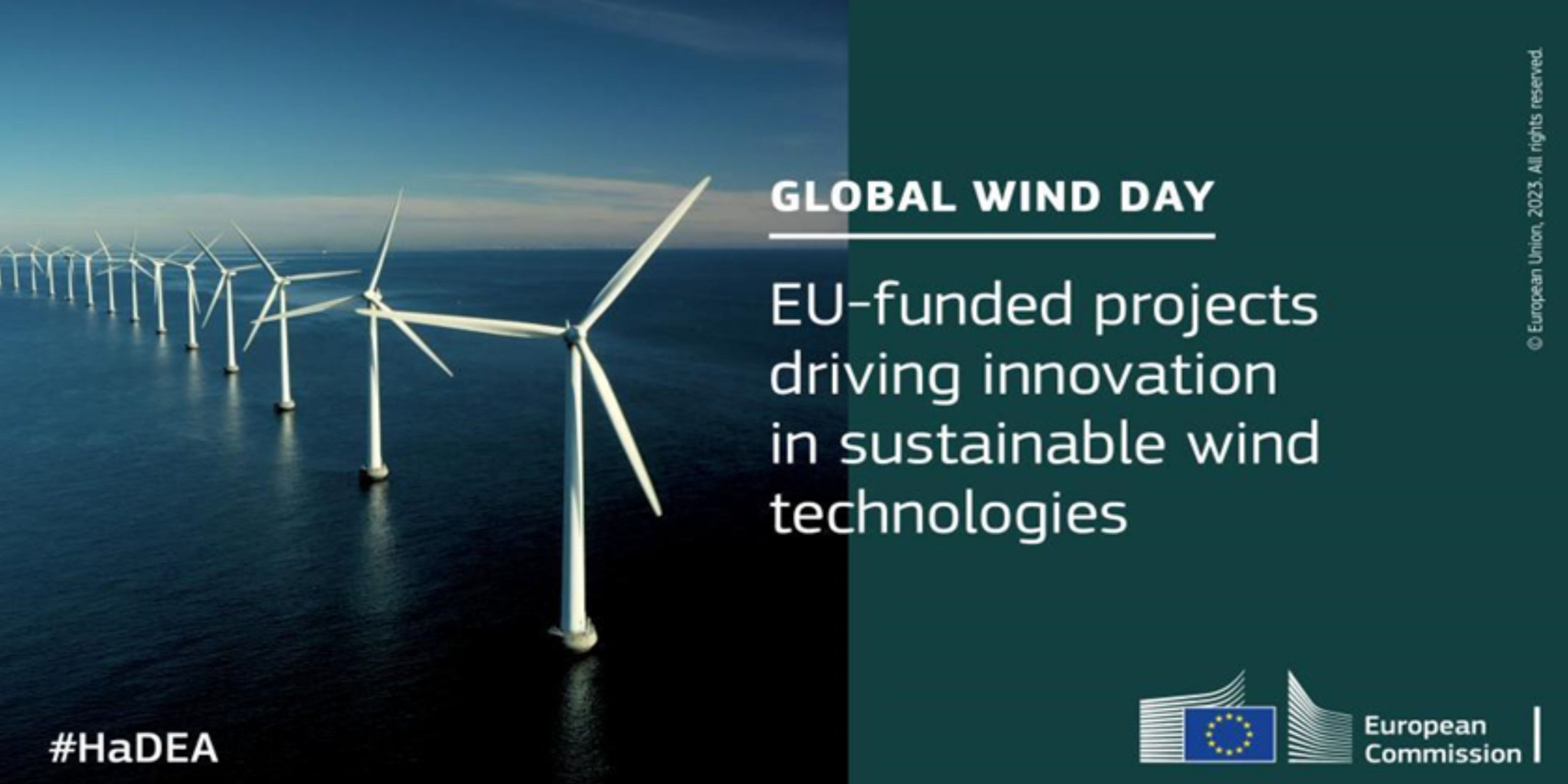Global Wind Day is celebrated annually on 15 June. It aims to promote and raise awareness about the significance of wind energy in reshaping our energy systems, reducing carbon emissions and stimulating job opportunities and economic growth. Embracing wind power can decrease dependence on fossil fuels, resulting in a smaller carbon footprint and cleaner air.
Some EU-funded projects managed by HaDEA are contributing to the development of the wind energy sector by directly focusing on harnessing wind power as a clean and sustainable energy source or by indirectly engaging in the development of innovative materials for wind turbines.
Discover some of these projects:
Carbo4Power is developing advanced lightweight and durable multi-materials for offshore turbine rotor blades. These materials enhance the performance and longevity of the blades while reducing the cost of energy production, maintenance and environmental impact. The project focuses on using nano-engineered hybrid materials and intelligent architectures, including multifunctional coatings and nanocomposites based on dynamic thermosets.
TURBO is working to minimise wind turbine blade’s defect formation through advanced process simulation, monitoring and control. The project will introduce innovative non-destructive testing methods for defect identification and develop new repair strategies for composites and coatings. By combining cutting-edge multi-physics process modelling and reduced order models, TURBO aims to optimise the production process and improve comprehension of composite manufacturing, ultimately leading to higher sustainability in wind turbine blade manufacturing.
D-STANDART is focusing on creating efficient techniques for assessing fatigue damage in composites and evaluating the sustainability of composite supply chains. By doing so, it aims to model the durability and sustainability of large-scale composite structures with varying compositions under real-world conditions such as loads, environment and manufacturing imperfections. The project uses minimal and accelerated testing of generic specimens and employs artificial intelligence and machine learning to apply the findings to larger structures. The ultimate objectives are to enhance time-to-market, reduce material waste and prolong the lifespan of composite products in the aerospace and wind energy sectors.
Source: European Commission | European Health and Digital Executive Agency (HaDEA) (https://rb.gy/gufsb)
